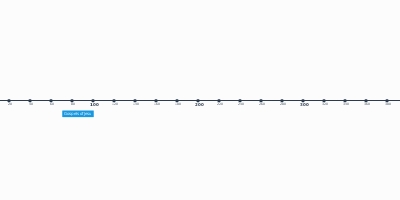Iberian War (jan 9, 526 – sep 28, 532)
Description:
Tensions between the two powers were further heightened by the defection of the Iberian king Gourgen to the Romans. According to Procopius, Kavadh I tried to force the Christian Iberians to become Zoroastrians, who in 524/525 under the leadership of Gourgen rose in revolt against Persia, following the example of the neighboring Christian kingdom of Lazica. Gourgen received pledges by Justin I that he would defend Iberia; the Romans indeed recruited Huns from the north of the Caucasus to assist the Iberians.[4]War
Violence escalated at various points where the power of the two empires met: in 525 a Roman fleet transported an Aksumite army to conquer Himyarite Yemen and in 525/526, Persia's Arab allies, the Lakhmids, raided Roman territories on the edge of the desert. By 526–527, overt fighting between the two empires had broken out in the Transcaucasus region and upper Mesopotamia, and the Persians continued to exert pressure on the Romans to obtain funds from them.[5] Following the emperor Justin I's death in 527, Justinian I succeeded to the imperial throne. The early years of war favored the Persians: by 527 the Iberian revolt had been crushed, a Roman offensive against Nisibis and Thebetha in that year was unsuccessful, and forces attempting to fortify Thannuris and Melabasa were prevented from doing so by Persian attacks.[6]
In 528, the Persians pressed on from Iberia to capture forts in eastern Lazica. Attempting to remedy the deficiencies revealed by these Persian successes, Justinian reorganised the eastern armies by dividing the command of the magister militum of the East in two and appointing a separate magister militum of Armenia over the northern portion.[7] The most important Roman initiative on the southern front in 528 was Belisarius's expeditions to Thannuris, where he tried unsuccessfully to protect Roman workers, undertaking the construction of a fort right on the frontier.[8] His forces were defeated by Xerxes during the battle of Thannuris and he had to retreat to Dara.[9]
Damaging raids on Syria by the Lakhmids in 529 also encouraged Justinian to strengthen his own Arab allies, helping the Ghassanid leader Al-Harith ibn Jabalah turn a loose coalition into a coherent kingdom which was able to gain the upper hand against the Lakhmids over the following decades.
In 530, Belisarius led the Romans to victory over a much larger Persian force under Mihran through his superior generalship in the Battle of Dara, while Sittas and Dorotheus defeated a Persian army under Mihr-Mihroe at Satala. In 531, Belisarius was defeated by Persian and Lakhmid forces at the Battle of Callinicum, but, during the summer of the same year, the Romans captured some forts in Armenia, and effectively repulsed a Persian offensive.[10] The Roman failure at Callinicum was followed by a commission of inquiry, the result of which was the dismissal of Belisarius from his post.[11] Azarethes, the Persians' commander at Callinicum, was also stripped of his ranks due to his failure to actually capture any significant fortification.
Added to timeline:
Date:
jan 9, 526
sep 28, 532
~ 6 years and 8 months
